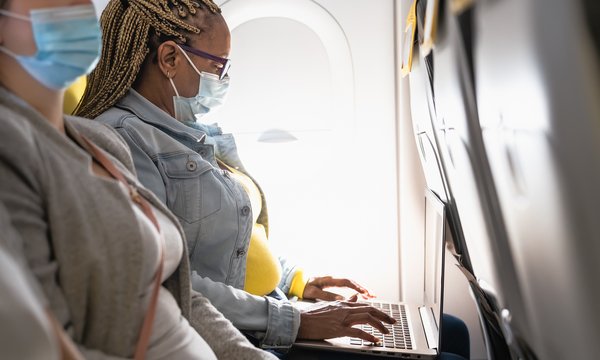March 2024 marked four years since the COVID-19 pandemic upended life as we knew it. Non-essential workers stayed home. School buildings closed and teachers scrambled to deliver virtual learning. People became isolated, socialized with a limited circle of family and friends, wore masks, and practiced social distancing (six feet apart!) in public spaces. Celebrations were postponed, funerals were missed, and holidays were observed virtually. Families lost loved ones, and essential workers felt burned out.
As a result, 41 percent of all U.S. adults reported experiencing high levels of distress at some point during the pandemic, according to surveys conducted by the Pew Research Center between March 2020 and September 2022. For young adults ages 18 – 29, that figure reached 58 percent.
“The pandemic’s isolation probably hurt young people more,” says Dr. Ryan Connolly, psychiatrist and Senior Medical Director of Behavioral Health at Independence Blue Cross. “They’re more likely to be single, and it took away more of their social outlets. Most mental health issues begin in the second or third decade of life and in the context of stress; the pandemic was certainly such a stress.”
- MORE ON HEALTH & WELLNESS
- How socioeconomic factors shape health outcomes in minority communities
- Destigmatizing mental health discussions with family and friends
- How volunteering can help you grow personally and professionally
The IBX Opinions Community Weighs in
To learn more about the pandemic’s impact on people in our region, we surveyed the IBX Opinions community in February 2024. IBX Opinions is a panel of 1,600 volunteers from the 5-county region, ages 18 and over, who respond to online surveys. They include IBX members, non-members, and uninsured individuals.
Of the 449 survey respondents, 173 were 18 – 64 years of age and 276 were 65 years of age or over; 309 reported their gender as female and 140 identified as male.
Here’s what we found:
• Respondents reported being either extremely concerned (11 percent) or somewhat concerned (55 percent) about contracting COVID-19 today.
• They were most concerned about the possibility of lingering side effects (84 percent), the potential for serious illness leading to hospitalization (63 percent), or infecting others who are immunocompromised (61 percent).
• While 93 percent of respondents reported limiting or modifying their social interactions during the height of the pandemic (2020 – 2021), only 37 percent do so today.
“Four years following the onset of the pandemic, there’s probably an increasing feeling that there’s not much more to do,” Dr. Connolly says. “People have been vaccinated if they’re going to be. And there’s a lot of social pressure. Even the CDC has said that people can return to normal activities if they have no fever and their symptoms have improved for 24 hours.”
Mental Health Effects of the COVID-19 Pandemic
Just over half of all IBX Opinions respondents (57 percent) reported that the pandemic had no impact on their mental health. For the remaining 43 percent who were affected, anxiety was the most cited impact (27 percent), followed by loneliness (11 percent), and depression (10 percent).
However, respondents ages 18 – 64 reported higher incidences of anxiety (35 percent vs. 22 percent); depression (16 percent vs. 7 percent); and grief (12 percent vs. 6 percent) than their older counterparts.
Support for Mental Health
Respondents reported taking a variety of steps to improve their mental health since the pandemic. Some of the more common coping mechanisms included:
• Focusing on their physical or nutritional wellness (58 percent)
• Connecting with supportive individuals or groups (46 percent)
• Using meditation or mindfulness techniques (24 percent)
• Seeking mental health services such as therapy or medication (18 percent)
When it came to mental health services, respondents in the 18 – 64 age group were more than twice as likely to have sought mental health care (27 percent vs. 12 percent) than those in the 65+ group. “Working with a therapist helped me develop coping skills and strategies to manage my anxiety,” wrote one respondent in the 18 – 64 age group. “It’s empowering to have someone in my corner rooting for my mental well-being.”
“Working with a therapist helped me develop coping skills and strategies to manage my anxiety. It’s empowering to have someone in my corner rooting for my mental well-being.”
“Practicing yoga regularly has been a game-changer for my mental health,” said another. “It helps me stay grounded, calm, and centered, even during the toughest of times.”
Others reported hanging out with friends, going to church, getting a pet, walking, reading, working out, or using a calming app for support.
“My friends and family are my greatest sources of comfort and strength,” wrote a 65+ respondent. “Their unwavering support and unconditional love remind me that I’m never alone in my struggles.”
For more information about mental health, self-care strategies, and where to find help, visit ibx.com/knowyourmind.
This content was originally published on IBX Insights.
About IBX Insights Team
The IBX Insights Team is here to provide tips on using your health insurance and living a healthy life.



